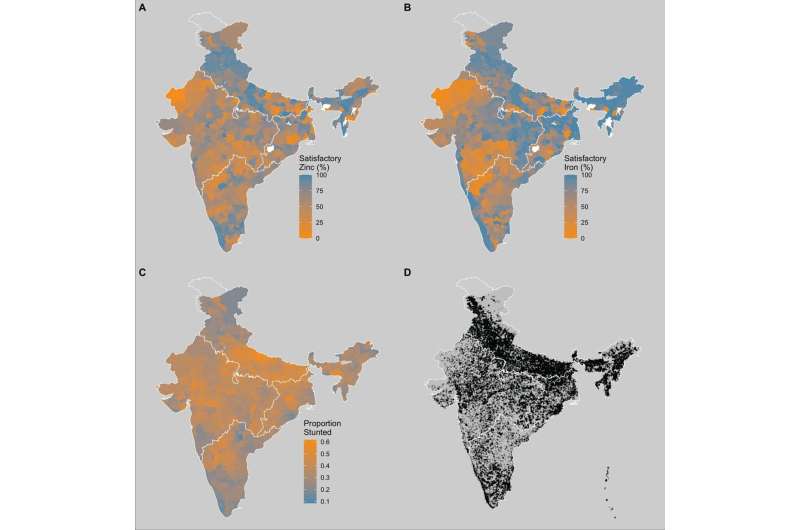This article has been reviewed according to Science X's editorial process and policies. Editors have highlighted the following attributes while ensuring the content's credibility:
fact-checked
peer-reviewed publication
trusted source
proofread
New study reveals a way to help prevent childhood stunting

A relatively small intervention could have a huge impact on a damaging condition that stalks children in the developing world. A new Stanford-led study shows that adding zinc to farmland soil can help prevent childhood stunting, a condition due to chronic undernutrition that is associated with poor brain development and long-lasting harmful consequences, such as reduced school performance and increased disease risks.
The paper, published Aug. 21 in Scientific Reports is the first large-scale study to examine the association between children's nutritional status or health outcomes and soil mineral availability in India, where more than a third of children under five suffer from stunting.
"Our results add to a growing body of literature suggesting that interventions like micronutrient-enriched fertilizers may have a positive effect on health," said study lead author Claire Morton, an undergraduate in mathematics and computational science at Stanford University. "This doesn't prove that those interventions would be cost-effective for India, but it's an exciting indication that they are worth testing."
The researchers analyzed health data from nearly 300,000 children and one million women across India with over 27 million soil tests drawn from a nationwide soil health program. They found that that the presence of zinc in soil helps prevent stunted childhood growth, and iron in soil helps keep hemoglobin—a protein in red blood cells that carries oxygen—at healthy levels. The results suggest that fortifying soil with minerals could be a beneficial health intervention.
The link between soil zinc and childhood stunting is particularly robust—a one standard deviation increase in satisfactory soil zinc tests is associated with approximately 11 fewer children stunted per 1,000, according to the research. As a result, the researchers suggest that the potential benefits of using zinc-enriched fertilizers as health interventions deserves more consideration in India specifically and perhaps more generally.
"We're not saying that geography is destiny, but soils really do seem to play a role in shaping child health," said study senior author David Lobell, the Gloria and Richard Kushel Director of Stanford's Center on Food Security and the Environment and professor of Earth system science in the Stanford Doerr School of Sustainability. "Even if this is only a small role, understanding it could help to identify better approaches to solving child stunting in India, which is one of the single biggest and longstanding challenges in global food security."
Co-authors of the study also include Hemant Pullabhotla of Deakin University in Australia and Leah Bevis of Ohio State University.
More information: Claire M. Morton et al, Soil micronutrients linked to human health in India, Scientific Reports (2023). DOI: 10.1038/s41598-023-39084-8




















